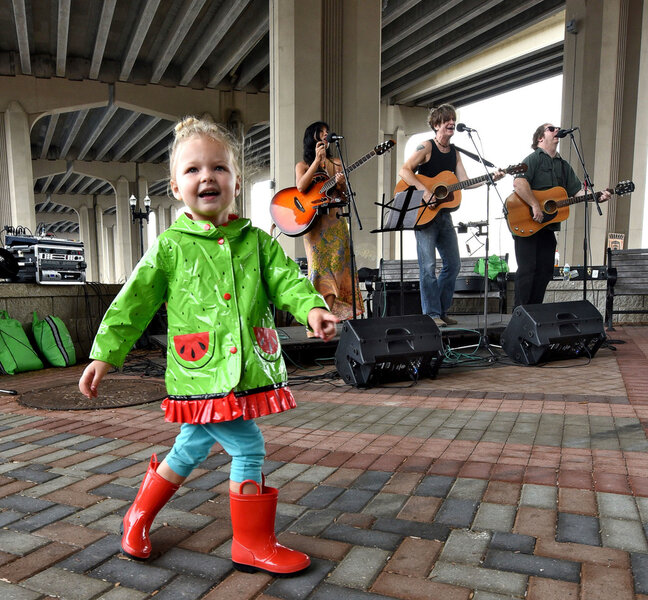An artistic lift after disasters
Loading...
After a hurricane, earthquake, or a terrorist attack, artists and performers are usually not first responders. Yet soon enough, they can be second to none in soothing a community’s wounds or raising money. A good example was Telemundo’s four-hour telethon on Sept. 24 that brought out stars such as Jennifer Lopez on behalf of the victims of hurricanes Maria, Harvey, Irma, as well as the Mexican earthquakes. With the right songs by celebrities and a pitch for donations, disaster-hit places like Puerto Rico can receive a quick lift, both in spirit and cash.
“The healing power of the arts is a real thing,” says Jake Speck, executive director of Houston’s A.D. Players. His theater company is now putting on the lighthearted comedy “Harvey” – the Pulitzer Prize-winning play about a giant “invisible” rabbit named Harvey that eventually brings joy to everyone. (The play was selected a year ago.)
Celebrity telethons are the most common way for a performer to contribute after a disaster. Willie Nelson, for example, organized a benefit concert called “Harvey Can’t Mess With Texas.” Held in Austin on Sept. 22, it not only raised millions but showed the power of music to convey hope. Another telethon called Hand in Hand also raised money for hurricane victims with performances by such singers as Stevie Wonder and Blake Shelton.
Other art forms may have deeper ways to reach a community in crisis. By the nature of their craft, for example, playwrights can offer a vision of an alternative future that may help people rise above a grim situation with a transcendent message. In Manchester, England, the Royal Exchange Theatre is now putting on the 1938 American drama “Our Town,” six months after a terrorist attack killed 23 people in the city.
The play, about a mythical New Hampshire town, was chosen to remind residents to see the extraordinary in the ordinary. Or, as Thornton Wilder wrote about his play, “It is an attempt to find a value, above all price, for the smallest events in our daily life.”
The arts are necessary for post-disaster communities. As Wilder’s narrator in “Our Town” says: “We all know that something is eternal.” And the power of culture to restore a broken social fabric and bring insights for personal healing can be a very real part of that “something.”







